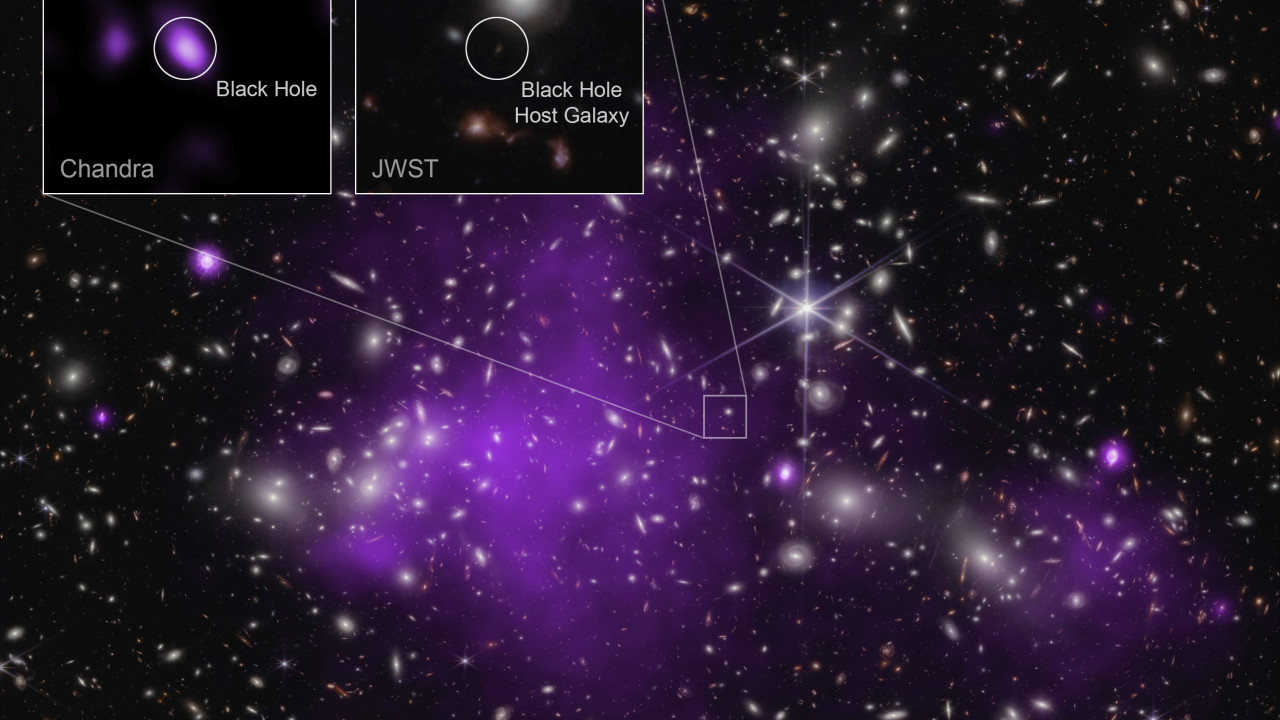ShA team of scientists in coordination with the North American Space Agency (NASA) has discovered the oldest black hole found so far. The report released Monday confirms the theory (so far) that supermassive black holes have existed since the beginning of the universe.
The black hole was found in observations made by the James Webb Space Telescope and the Chandra X-ray Observatory, two telescopes sent by NASA, to have formed just 470 million years after the Big Bang, the moment the universe formed.
Taking into account that the age of the universe has been measured by astronomers and astrophysicists at about 13.7 billion years, this means that the black hole has been around for about 13.2 billion years.
But the black hole’s most impressive feature is its size: it is ten times larger than the black hole in our galaxy, the Milky Way. While our own black hole, Sagittarius A, is about 0.1% of the mass of the Milky Way, the newly discovered black hole weighs between 10% and 100% of the mass of all the stars in its galaxy.
The report was presented in a statement, with lead author of the discovery, Akos Bogdan of the Harvard-Smithsonian Center for Astrophysics, explaining that “it is amazing that this object is already in place with its entire galaxy, so early in the galaxy’s existence.” being”.
our @NASAWeb And @ChandraXray Space telescopes have discovered the farthest black hole visible with X-rays. Webb’s data shows that the black hole’s host galaxy is 13.2 billion light-years away from Earth, when the universe was only 3% of its current age. https://t.co/zcXHGAe2PZ pic.twitter.com/W9G4R5V0vR
– NASA (@NASA) November 6, 2023
The researchers reported, quoted by NBC News, that the black hole formed from huge gas clouds from a nearby galaxy. Both galaxies merged around the black hole.
X-ray analysis from the Chandra Observatory also confirms that “it is possible to capture gas that is attracted by the black hole’s gravity,” and that visible light around the black hole is extremely strong.
This is another discovery supported by the James Webb Telescope, which, since its launch on December 25, 2021, has allowed us to capture images of the universe with greater resolution than ever before, providing a perspective on the infinite space surrounding us that we were unaware of. Until recently. .
James Webb explores the universe at a distance of about 1.5 million kilometers from Earth, and thanks to innovative image capture technology, it has already become possible to find many planets with characteristics that allow the existence of life.
Read also: NASA shares an (amazing) image of Jupiter taken by Hubble

“Coffee trailblazer. Social media ninja. Unapologetic web guru. Friendly music fan. Alcohol fanatic.”




